A Conversation with Conservation Photographer Michele Westmorland
By Elizabeth Rauer & Michele Westmorland
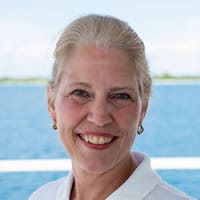
During the 2016 WiLDSPEAK event in Washington DC, we had a chance to speak with conservation photographer Michele Westmorland about what it was like to join the Khaled bin Sultan Living Oceans Foundation on the Global Reef Expedition in French Polynesia and her work with the International League of Conservation Photographers (iLCP).
The following interview was edited for brevity and clarity.
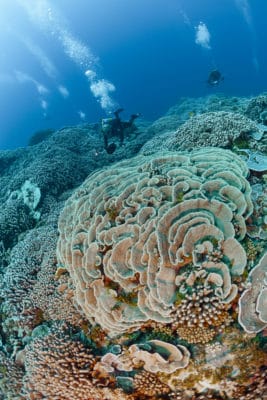 Michele, you’re not just any kind of photographer, you are a conservation photographer. What brought you into this line of work?
Michele, you’re not just any kind of photographer, you are a conservation photographer. What brought you into this line of work?
I finally realized after shooting for about 30 years, starting out in marine life photography, that I was getting beautiful pictures, but I wasn’t really giving back. There wasn’t a lot of discussion back then about conservation work and how to use media. When iLCP was formed, I went, wow, this is the way to at least participate, to have a voice to take my experiences.
So you’ve been shooting for a little over 30 years underwater. Over that period of time have you noticed any changes in the marine ecosystem?
Massive. Massive changes. I cut my teeth on underwater photography because I was still in corporate life then. That career took me to Florida from California and I had to give up my snow skiing and I took up SCUBA diving. But I was always interested in photograph, and as soon as I picked up an underwater camera, I was hooked. I learned to dive at a time when impacts to the Florida Keys and many parts of the Caribbean were just barely starting to show up. We still had healthy reef systems. Big staghorn corals, lots of beautiful locations, healthy reefs and fish communities. Back then, we were starting to see touches of overfishing and some runoff from major developments. But today, 30 years later, going back to the Caribbean on assignment breaks my heart. Absolutely breaks my heart. With the exception of Gardens of the Queen in Cuba, which is the way the Caribbean should look. By the third day diving there we were sick of seeing sharks. It was like “Oh, another shark. Don’t need another picture of a shark.” How often can you say that anymore?
Any fear diving with sharks?
No. No, I don’t. Do I have a healthy respect with certain species? Of course, I do.
You were the first iLCP photographer to join the Living Oceans Foundation on the Global Reef Expedition, can you tell me about your assignment on that mission?
The good news is that I not only photograph underwater, but over my years of making a living in the photography world, you have to be pretty diverse. One of the things I have done is shoot boat interiors for a fleet of boats around the world – liveaboard dive boats. It gave me a bit of an advantage because one of the things I was asked to do was collect images of the scientists at work. What they were doing onboard, not just underwater, but on the ship. It was an extremely good fit.
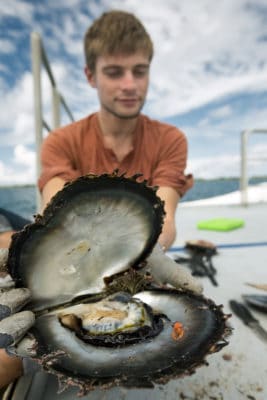
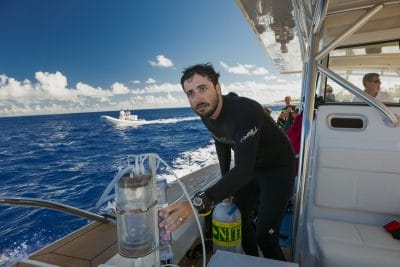
What was the most amazing experience you had diving in French Polynesia on the Global Reef Expedition?
I now shoot more than underwater photography. I photograph culture as well. Papua New Guinea and parts of Melanesia and Polynesia are specialty areas of mine. When I talk to people about going from photographing underwater to photographing people, I tell them it was because I raised my head above the surface and saw the connection between the communities and the health of the ocean life. That was, and still is today, a very strong combination. What was the most exciting for me? On the French Polynesian expedition, the very last day everyone was saying we were going to go check out one of the pearl farms, and I went ‘Seriously?’ That was such a highlight because not only did I collect images of a sustainable industry in French Polynesia, topside images of how they plant the cores within the oysters, but I also got to photograph underwater. The freedivers pulling up the nets for collection and checking the oysters was fascinating. Talk about a day of pure magic for me to see how people work in unison with the ocean and sustain their community.
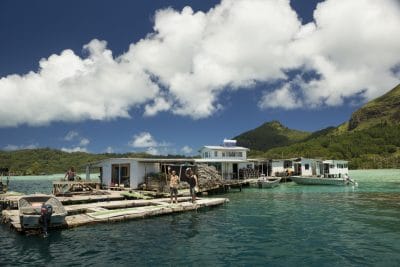
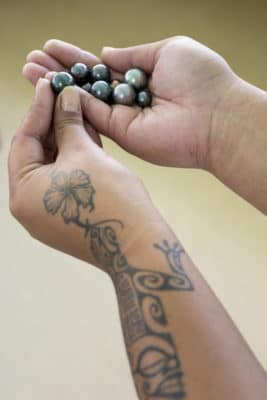
Do you have a favorite photo from the expedition?
I actually do. When I was starting to discuss the whole project with everyone at iLCP I began to put my mental story board together. The project, and what the Living Oceans Foundation was doing, was to research the health of the coral reefs. Our planet is made up of a lot of good coral reef systems and it needs to be maintained. I had this vision in my mind of using a specific lens to get a circular pattern of a really healthy reef and the image turns out to look like the Earth with the coral reef. The image is titled “What If the Earth Were Made of Coral?” and it has won several awards. It’s kind of a signature piece, and I think it tells that story. But that’s what mentally I wanted to do. You start thinking about how you want to make a photograph, ‘What is the story you are going to tell?’ and that was the one and it works.
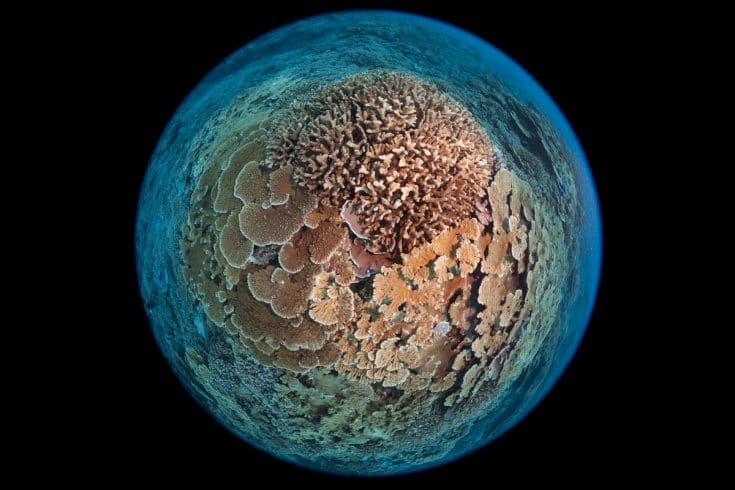
What are you working on now?
I’m just finishing my documentary film and it has been a very long journey but it is going to be very rewarding when it’s done. I was given a book many years ago written by an American woman artist named Caroline Mytinger. This book was a chronicle of her expedition with another female to paint portraits of indigenous communities in Melanesia before the colonialists really started making a lot of changes. She and her friend, Margaret Warner, did this between 1926 and 1930. The title of my film is actually pulled from Caroline’s two books. The first book was Headhunting in the Solomon Islands and the second book was New Guinea Headhunt so the title of my documentary film is Headhunt Revisited with Brushed Canvas and Camera. The film is in post-production now and should come out next year.
I wanted to find out who she was, what she accomplished, and what this artwork looked like. They created stunning portraits that showed the people of Papua New Guinea and Solomon Islands with pride and dignity. I think that was the key for me. In keyed me into my photography, made me think about how I was depicting my subjects. I wanted to illicit that same pride and dignity in my photos. The more I moved on with this project the more I discovered that art, no matter what form it’s in–whether it is oil on canvas, charcoal, filmmaking, photography–these are the connective tissues, the connections that span oceans and decades. They tell history, they tell stories. There is a physicist who I like to quote because he says that ‘science and art are not necessary for us as humans to survive, but it is what makes us human.’
All photos: © Michele Westmorland /iLCP